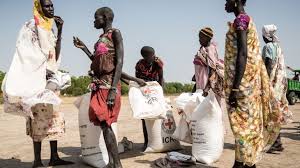Around 10.7 million people are currently food insecure across Somalia, Kenya, Ethiopia and Karamoja region in Uganda, the Food Security and Nutrition Working Group (FSNWG) disclosed on Wednesday in a report.
Although the food insecure population is lower than numbers observed during the drought of 2017 (15.3 million people), there is a high risk of a worsening situation due to forecasted rainfall deficits.
The delay in the start of the March to June long rains, coupled with forecasted rainfall deficits in April are building on already dry conditions due to poor October to December rains over some parts of the Greater Horn of Africa.
The poor performance of the past season’s short rains already led to below-average crop production and deteriorating pastures in some agro-pastoral and marginal mixed farming areas.
“If the forecasted rainfall deficits materialize in April, this would lead to an atypical increase in food insecurity, likely to peak from June to October. Northeastern Kenya, south and central Somalia and south and eastern Ethiopia would likely experience a rapid decline in pastoral conditions,” noted FSNWG in the report issued in Nairobi.
According to FSNWG, dry conditions and high temperatures, between January and March, have already led to deteriorations in pastures and water availability in these areas, affecting livestock body conditions, reducing milk production, and leading to earlier-than-normal livestock migration.
Crop production would also be below average in marginal agricultural areas of Kenya, Somalia and Ethiopia.
“This along with the potential of lower than average production of key regional players such as Uganda and Tanzania, could cause price increases and reduce access of poor households to basic food supplies,” added the report.
Currently, despite poor agricultural and pastoral conditions, favorable market prices for key staple foods and livestock are facilitating food access for households.
The good performance of last year’s long rains has also mitigated to some extent a further deterioration of conditions.
Cereal prices remain largely below average while livestock prices are similar to or above average across most markets, noted the report.
FSNWG is a regional platform, currently co-chaired by IGAD Climate Prediction and Application Centre and FAO. Its mandate is to provide an up-to-date food security and nutrition situation analysis and offering a forum to build consensus on critical issues facing policy and interventions
JK/abj/APA


